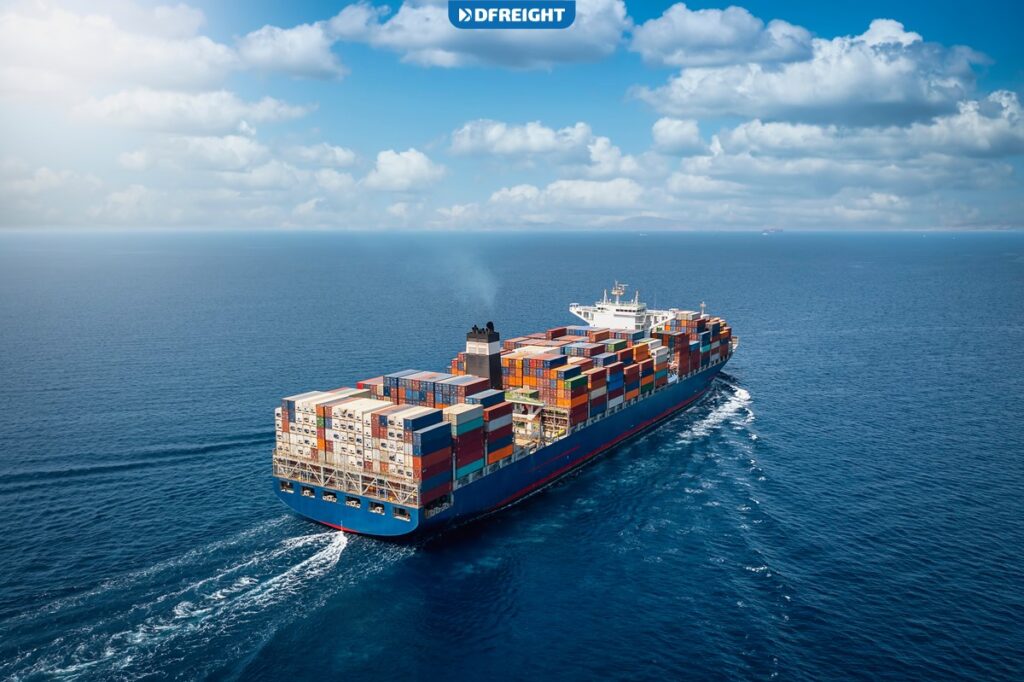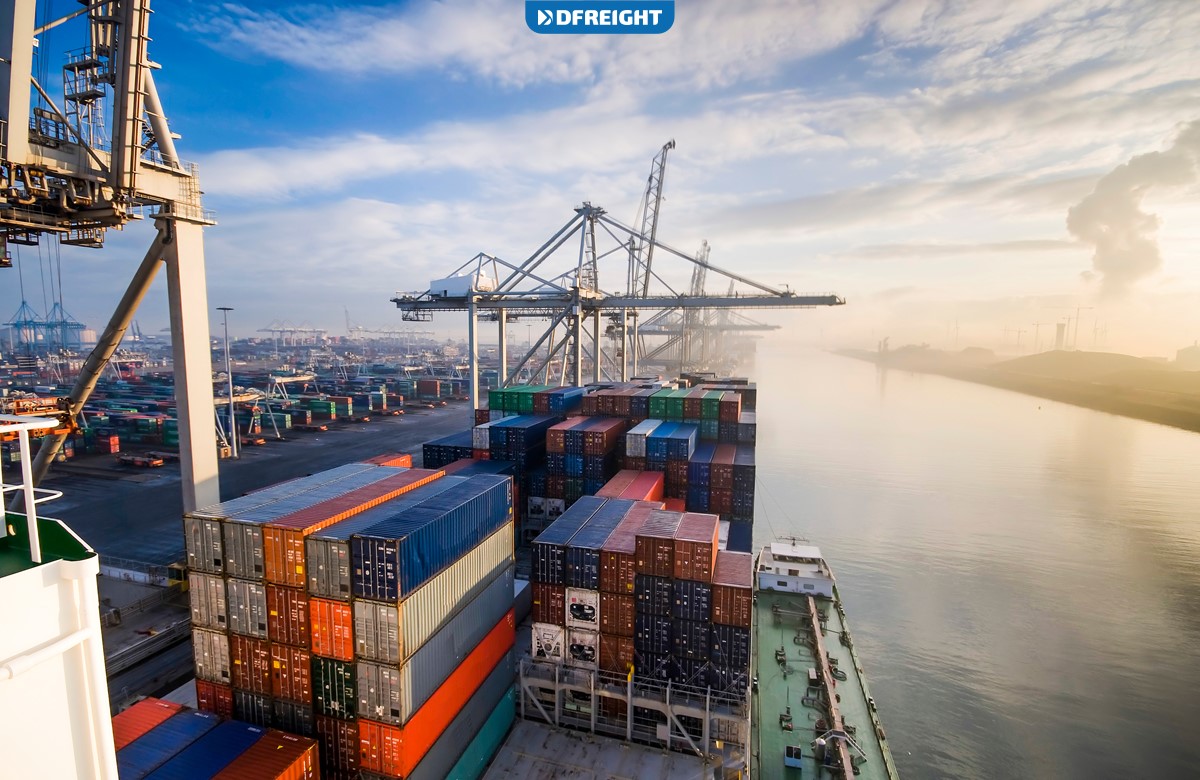The Port of Fujairah is located in the United Arab Emirates and is the only multi-purpose port on the eastern seaboard of the Arabian Peninsula. The port is strategically located close to the entrance of the Strait of Hormuz, making it a key transit point for crude oil and petroleum products from the Persian Gulf. The port is also a significant bunkering hub for vessels in the region. In this blog post, we will introduce the port and its importance.
Table of Contents
The Port of Fujairah
The Port of Fujairah is one of the busiest ports in the world. It is located in the United Arab Emirates and is the only port in the country on the Indian Ocean. The Port of Fujairah is the fifth busiest port in the UAE. The port is situated on the Fujairah Peninsula, about 60 kilometers from Dubai. The port is one of the most strategically located ports in the world and serves as a hub for shipping traffic in the Middle East. The port is a significant transit point for crude oil and refined products.
The port has a deep-water harbor and can accommodate large vessels. The port is also equipped with a modern cargo handling facility. The port can handle about 100 million tons of cargo per year. The port handles many shipments, including containers, break bulk, general cargo, and vehicles. The port also has a dedicated facility for handling Ro-Ro (Roll-on/Roll-off) cargo. The Port of Fujairah is a significant contributor to the economy of the United Arab Emirates. The port employs Thousands of people. The port also plays a vital role in transporting crude oil and refined products from the Middle East to the rest of the world.
The Port of Fujairah, the only maritime facility with multiple uses on the east coast of the United Arab Emirates, serves as a major shipping hub for the Gulf and surrounding areas. The Port, which is strategically situated about 70 nautical miles outside the Strait of Hormuz and offers a vital economic connection between Europe and Asia, enables more local and international trade in Indian and North East African markets.
All containers, general cargo, RoRo, and cruise ships in the Port are exclusively managed by Fujairah Terminals, a wholly owned subsidiary of Abu Dhabi Ports.

The History of the Port of Fujairah
The port of Fujairah is one of the United Arab Emirates’ busiest ports. It is located on the east coast of the UAE, in the emirate of Fujairah. The port of Fujairah was first established in the early 1920s. Since then, it has undergone several expansion projects. In the 1970s, the port was expanded to include an oil terminal. In the 1990s, the port was expanded again to include a container terminal. The port of Fujairah is currently undergoing other expansion projects.
Important Features of Fujairah Port
Important characteristics of Fujairah Port are:
- 1000-meter-long quay wall
- 300,000 m2 yard area with an 18 m draft next to
- Covered storage spaces and extended bonded warehousing
- 6 RTGs and two new STS post-Panamax quay cranes
- Mobile harbor cranes with capacities of 100 and 150 tons to support big lift cargo
- Value-added services include a facility for container repair and cleaning.
- Up to 1,000 tons of load bearing capacity for large shipments on berth and yard facilities
Fujairah’s Geographical Advantages
Fujairah enjoys a unique geographical location that gives it many advantages over other regional ports. Firstly, it is the only UAE port located on the Indian Ocean, making it ideally placed to serve the growing markets of Asia. Secondly, it is close to the Strait of Hormuz, through which a large proportion of the world’s oil shipments pass. This gives Fujairah the potential to become a major hub for oil storage and shipping.
The Infrastructures of Fujairah port
On the eastern seaboard of the United Arab Emirates, about 70 nautical miles from the Strait of Hormuz, the Port of Fujairah is the only multipurpose port. As a part of the UAE’s economic expansion, the port’s initial construction began in 1978, and its entire operations started in 1983. Since that time, the port has been working to develop its infrastructure and wide range of functions continually.
Oil Berths
The Port’s Oil Terminal, FOTT, can operate either nine main berths or 14 wing berths and four bunker barge berths specifically designated for low-sulfur oil ships that adhere to IMO 2020.
Infrastructure is already in place if a commercial requirement arises to create a second VLCC jetty and 12 extra major berths.
Customers have full connectivity between any of the FOTT berths thanks to the port’s two matrix manifold systems. They also have the unusual option of moving goods directly between terminals without hiring a vessel.
VLCC Jetty
The VLCC Jetty, situated in deep water near the eastern end of the breakwater, has been fully operational since 2016. The Jetty was constructed to accommodate tankers ranging in capacity from massive oil carriers to tankers the size of Aframax. Its main objective is to make it easier for vast cargoes of fuel oil and crude oil to be imported and exported. Two 40-inch products or crude lines connect it to Matrix Manifold 2 for communication.
Matrix Manifolds
Two extremely advanced Matrix Manifold Systems, a huge number of piggable pipes, and innovative digital technology are the secrets to FOTT’s success in terms of fast vessel turnaround times and short waiting times.
Thanks to the Matrix Manifold systems, customers have complete connectivity to any of the FOTT berths. The storage terminals are given access to all the main and wing berths via FOTT’s dock lines in exchange for connecting a minimum number of black oil and white oil lines to one of the manifolds. This enables highly affordable and adaptable logistical solutions.
The Matrix Manifold system’s unique ability to transport products directly across storage terminals without the need for intermediaries is another critical feature.
Bunker Barge Berths
Oil Terminal 1’s berths 3A, 3B, 3 East, and 3 West have a depth of -15.00 m CD. These docks can accommodate ships weighing between 10,000 and 20,000 DWT. To connect to Matrix Manifold 1, which connects all user pipelines, each berth has a black line and a white line. To support the implementation of the IMO 2020 0.5% sulfur cap regulation, the four berths will be set aside for MGO and (V)LSFO loading and discharge operations.
Dry Bulk and Multipurpose Berths
Three of the port’s five dry bulk and general cargo berths—dredged to a depth of 15 m—are reserved for bulk loaders. The two bulk loaders at SSB # 2 can load and unload vessels up to 90,000 dwt at 600 mt/hr and 1,200 mt/hr, respectively, through a conveyor belt system that connects the grain terminal to the port.
Service Harbor
The 500-meter-long westside quay wall is utilized for vessel loading, unloading, and mooring. The area is furnished with various mobile equipment and lifting tools to load and unload cargo from utility boats efficiently and safely. For temporary storage, covered storage compartments are offered.
The 250-meter-long southside quay wall is utilized for vessel loading, unloading, and mooring. Supply and utility vessels can anchor at Piers A (480 m) and B (412 m). At the pier’s northern end, a gasoline pontoon is situated. A floating pontoon (200 m) provides additional berthing options for dhows. The 300-meter-long tug berth quay wall at the southern breakwater makes it easy for tugs owned by the port to dock. The Dhow Inspection jetty and pontoon are at the conclusion.
Fujairah’s Role in the UAE’s Economic Success
The port of Fujairah is strategically located on the east coast of the UAE, at the crossroads of the world’s busiest shipping lanes. The port is just a short distance from the Strait of Hormuz, making it an ideal transit point for ships traveling to and from the Persian Gulf. Fujairah’s proximity to the Strait of Hormuz also makes it an important strategic location for the UAE’s military.
The port of Fujairah is one of the busiest ports in the world, handling over 60 million tonnes of cargo each year. The port is a central hub for the region’s petroleum and petrochemical industries. In addition to crude oil and refined products, the port handles various other commodities, including grains, fertilizers, and steel.
The port of Fujairah plays a vital role in the UAE’s economy and is a crucial driver of the country’s economic growth. The port is a significant source of revenue for the UAE government and is a major employer in the country. In addition to the direct economic benefits that the port brings to the UAE, the port also plays an essential role in supporting the country’s strategic objectives. Fujairah’s role in the UAE’s economic success is twofold. First, the port provides a vital link in the country’s trade routes. Second, the port is a significant contributor to the UAE’s economy. The port is responsible for 10% of the country’s GDP and employs over 15,000 people.
The Future of the Port of Fujairah
The Port of Fujairah continues as a critical gateway for trade in the Arabian Peninsula. The port is undergoing expansion to accommodate larger vessels and increase its capacity. In addition, the port is investing in new infrastructure and technology to improve its efficiency and competitiveness further. The port is also working to attract more business and increase its share of the region’s trade. The port’s strategic location, modern facilities, and commitment to quality service are expected to continue to drive growth in the years ahead.

Conclusion
The Port of Fujairah is one of the most important ports in the United Arab Emirates and plays a vital role in the country’s economy. The port is strategically located and well-equipped with the necessary infrastructure. The port has a rich history, and it is poised for continued success in the future.
Dfreight is a pioneer of digital freight forwarding in the UAE, which has partnered with some of the most famous shipping lines in The Port of Fujairah to ship a wide range of commodities worldwide. The company has a strong network of shipping partners who provide efficient and reliable shipments from the UAE to every global port. With our competent team of shipping experts, we are always ready to assist our business customers every step of the way.
FAQs
What services does the port of Fujairah offer?
The port of Fujairah offers a wide range of services, including container shipping, bulk cargo shipping, general cargo shipping, and ro-ro (roll-on/roll-off) shipping.
What are the main industries of Fujairah port?
The main industries of Fujairah port include petroleum and petroleum products, chemicals, fertilizers, steel, and general cargo.
What is the capacity of Fujairah port?
The port of Fujairah has a capacity of 2.5 million TEU (20-foot equivalent units).
What are the main shipping routes of Fujairah port?
The main shipping routes of Fujairah port are to the Persian Gulf, India, and Pakistan.














